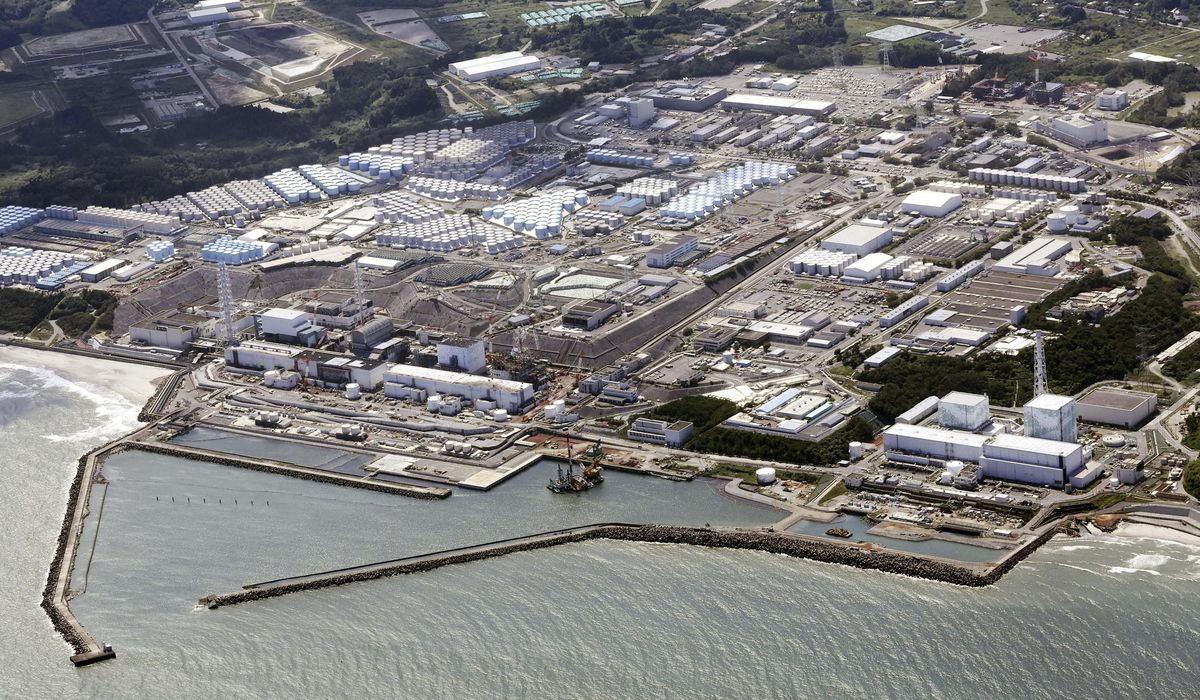TOKYO (AP) — The tsunami-damaged Fukushima Daiichi nuclear power plant started releasing treated and diluted radioactive wastewater into the sea on Thursday, following the successful completion of two earlier releases, according to Japanese officials.
The plant operator has already discharged 7,800 tons of treated water in each of the two previous batches, and now plans to release the same amount in the current batch until November 20.
Tokyo Electric Power Company Holdings (TEPCO) stated that the first of two pumps was activated by its workers to dilute the treated water with large quantities of seawater. The mixture is then gradually being sent into the Pacific Ocean through an undersea tunnel for offshore release.
The first wastewater release from the Fukushima Daiichi plant began in August, and it is expected to continue for several decades. The plant currently stores around 1.33 million tons of radioactive wastewater in approximately 1,000 tanks. This water has accumulated since the plant was severely damaged by the earthquake and tsunami that struck northeastern Japan in 2011.
TEPCO and the Japanese government argue that discharging the water into the sea is unavoidable due to the near-full tanks, as well as the decommissioning plans for the plant.
The wastewater discharges have faced strong opposition from fishing groups and neighboring countries, including South Korea, where hundreds of people have held protests. China has immediately banned all imports of Japanese seafood, causing significant economic damage to Japanese seafood producers and exporters.
Prime Minister Fumio Kishida emphasized that Japan has consistently provided transparent and scientific explanations about the discharge, gaining support from many members of the global community. However, he criticized certain countries for imposing restrictions on Japanese seafood without scientific justification. Kishida emphasized the importance of engaging in bilateral discussions to request the lifting of these restrictions and to firmly represent Japan’s position in international meetings and organizations such as the World Trade Organization.
Japan’s government has established a relief fund to support efforts in finding new markets and reducing the impact of China’s seafood ban. Additionally, the central and local governments have led a campaign to promote the consumption of fish and support Fukushima, a campaign that has gained the support of many consumers.
Prior to release, the water is treated to remove as much radioactivity as possible and is significantly diluted with seawater. TEPCO and the government assert that the process is safe, but some scientists argue that the ongoing release is unprecedented and should be closely monitored.
So far, TEPCO and the government have reported tritium, a radioactive isotope that they claim is impossible to separate using existing technology, at levels much lower than the World Health Organization’s drinking water standards.
In a recent incident, two plant workers were splashed with radioactive waste while cleaning piping at the water treatment facility. As a precaution, they were hospitalized for exposure, but have since been released and are being closely monitored by TEPCO. It has been confirmed that neither of the workers ingested any of the waste.
The International Atomic Energy Agency (IAEA) has concluded that if the planned release is carried out, it would have a negligible impact on the environment, marine life, and human health. IAEA officials responsible for the mission have expressed reassurance over the smooth operation of the releases thus far.









